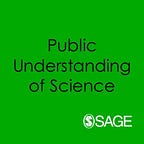The Correspondence of John Tyndall 1–3
Review by Matthew Wale
Tyndall was a lively writer, and his letters often make for entertaining reading and provide a fascinating insight into his life and 19th-century society more broadly.
‘I am condemned to give a lecture at Romsey on Tuesday next’ (vol. 3, p. 421). Written in March 1852, this less-than-enthusiastic admission to a friend was hardly an auspicious beginning to John Tyndall’s career as a communicator of science to the public. Nevertheless, it was a role for which he clearly had a natural aptitude. As professor of natural philosophy at the Royal Institution for Great Britain, for 34 years from 1853, he gave hundreds of lectures to full theaters, gaining a reputation as a gifted and eloquent speaker on the physical sciences. Tyndall should be considered an important figure in the history of scientific communication and the public understanding of science. These first three volumes of his collected correspondence (with more to come) are a fascinating social document with significance beyond the specifics of Tyndall’s life.
John Tyndall (1820–93) conducted groundbreaking research in magnetism, the radiation of heat, glaciology, meteorology, and bacteriology. He became one of the most fêted physicists of the period, but the accolades lay in the future for the young man we meet in this correspondence, spanning the period, 1840–52. We are able to follow Tyndall from his earliest employment, aged 20, with the Ordnance Survey of Ireland, a role that provided him with the mathematical training he would later use in his scientific work.
In the second volume Tyndall’s burning desire to expand his intellectual horizons becomes more apparent. In 1848, he made the radical decision to undertake a PhD in Germany at the University of Marburg. No equivalent qualification was offered by British institutions at this time, nor was there a formalised career path for those who wished to make science their occupation. As a student, Tyndall worked ‘tolerably hard’, rising at five o’clock to cram in a few hours of German before breakfast, followed by a day of lectures and laboratory work, and mathematics in the evening (vol. 2, p. 296).
The third volume of correspondence will perhaps be of greatest interest to those wishing to know more about the history of public engagement with science. In these letters we see Tyndall taking his first steps towards becoming a consummate communicator of physics, giving lectures in Southampton and Romsey, with the latter being a ‘full house and attentive audience’ (vol. 3, p. 352). Another letter provides us with evidence that Tyndall was already giving serious consideration to the ways in which he could make a lecture on physics — electrochemistry in particular — palatable to the general public. He noted that ‘subjects of this nature can generally appear mystical to a popular audience; lecturers I imagine introduce too many unexplained terms, and these when used serve only to arouse perplexity in the hearer’s mind’ (vol. 3, p. 134).
To remedy this, Tyndall provided a step-by-step account of how his lecture would proceed, taking the listeners from ‘easy beginnings’ and gradually building up to a more complex understanding of the topic. There is a strong focus on practical demonstration, inflected with showmanship, as he proposed to illustrate the ‘relation of electric action to chemical action’ via the process of electroplating: ‘medallions would be made and chains gilded before the audience’. This performative method of science communication would characterise much of his subsequent work as a public speaker, while the instructive books he wrote for ‘those who do not possess any special scientific culture’ similarly aided his readers’ understanding through experiments that could be easily replicated at home.
The correspondence includes all the extant letters sent and received by Tyndall, presented in chronological order and numbered for ease of reference. Each handsomely-bound volume begins with a brief but informative introduction, providing key historical context and an outline of Tyndall’s life during that specific period. As is to be expected when reading 19th-century correspondence, the text is often dense with allusions that might prove difficult to decipher were it not for the copious and detailed explanatory notes that accompany each letter. Tyndall was a lively writer, and his letters often make for entertaining reading and provide a fascinating insight into his life and 19th-century society more broadly.
Matthew Wale recently completed his PhD at the University of Leicester, England, writing his thesis on 19th-century natural history periodicals. He is currently a postdoctoral research assistant on the Arts and Humanities Research Council-funded project, Constructing Scientific Communities.
